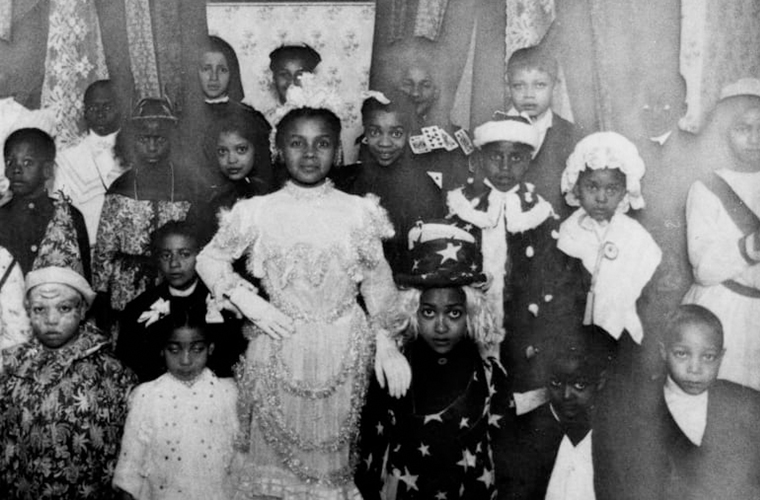Weeksville was a free black community founded in 1838 by James Weeks. Weeks was an African-American longshoreman from Virginia, who bought the land the community was built on from Henry C. Thompson, a free African-American, who purchased the land from Edward Copeland, who had purchased the land from an heir of John Lefferts. At this time, many African-Americans attempted to gain political and economic freedom via land ownership and building their own communities. Weeks sold off plots to other African-Americans, both those born free and former slaves.
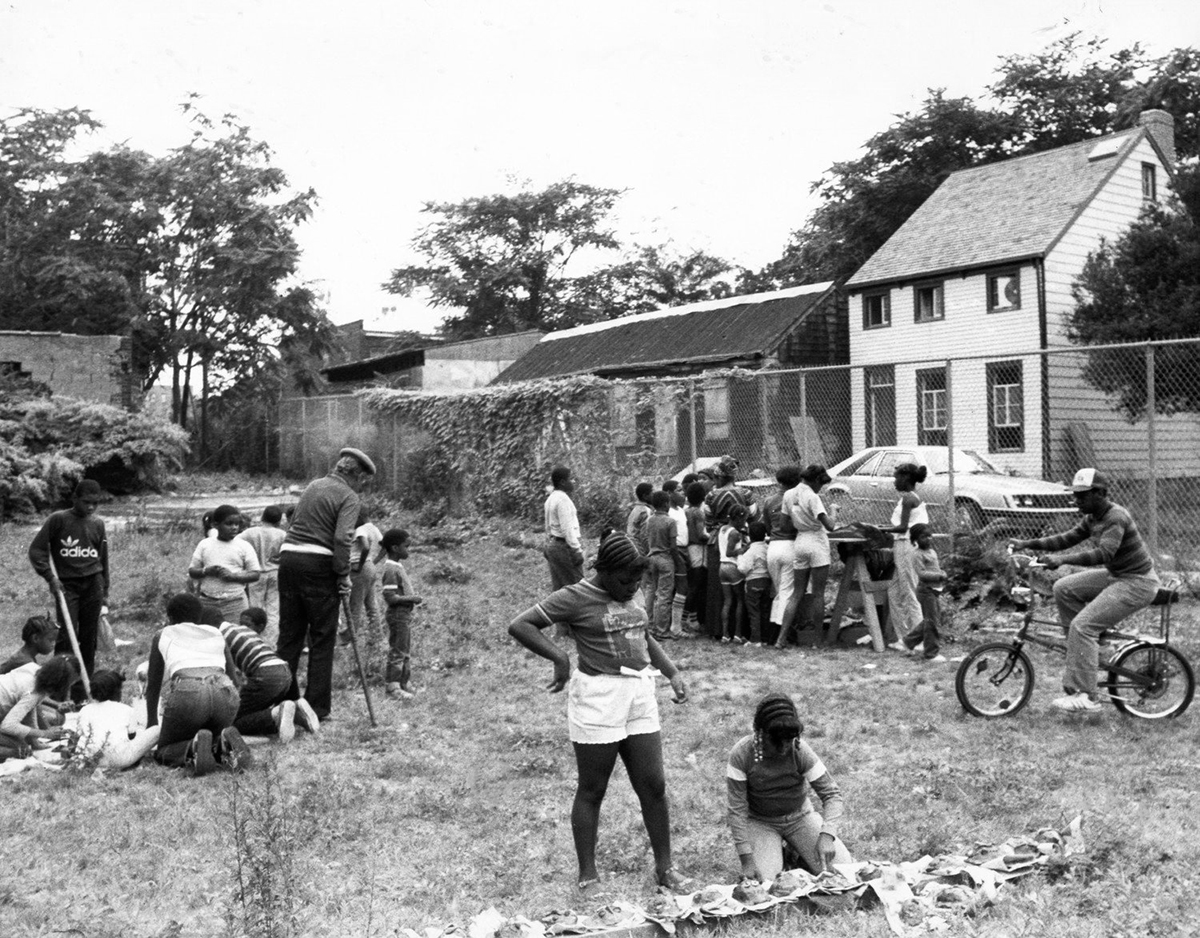
By 1855 Weeksville was home to over 550 African-Americans. It had its own churches, including Bethel Tabernacle African Methodist Episcopal Church and the Berean Missionary Baptist Church. Its school, Colored School No. 2, was the first school in the country to integrate both students and staff. It had one of the first if not the first African-American newspapers, the Freedman’s Torchlight, and in the 1860s became the national headquarters of the African Civilization Society and the Howard Colored Orphan Asylum.
Weeksville also was home to some extraordinary African-American leaders. Susan Smith McKinney Steward was the first African-American female physician in New York State. Her sister, Sarah Smith Garnet, was the first African-American female principal in the New York City school system, and the founder of the first African-American women’s suffrage organization, the Equal Suffrage League of Brooklyn.
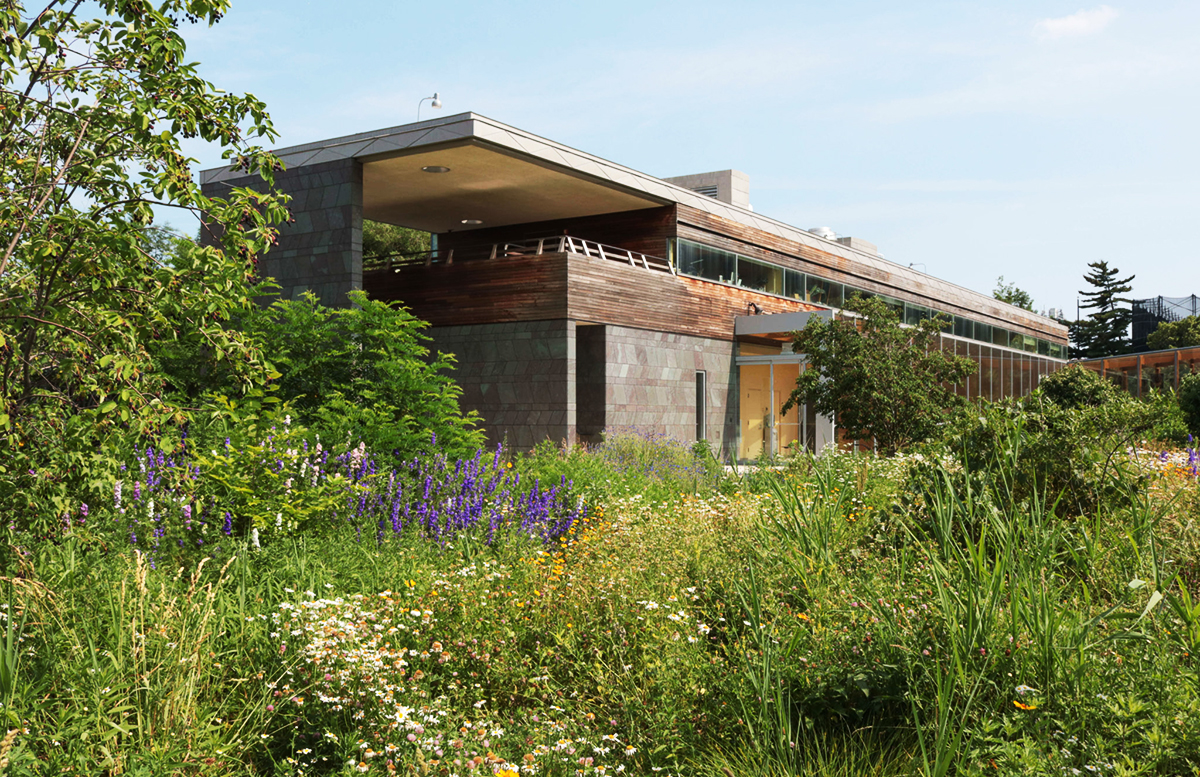
By the late 19th century, the land around Weeksville was further developed. The street grid expanded east, often running through existing Weeksville buildings and lots. Weeksville’s cemetery was demolished to make way for Eastern Parkway. The wood homes were replaced by brick rowhouses. Weeksville disappeared one street and house at a time, as its residents and land were absorbed by greater Brooklyn. Eventually, Weeksville not only disappeared as a distinct entity or place, but the memory of it was almost entirely forgotten.
This changed in 1968. Weeksville was “rediscovered” when a mention of it was found by a local historian James Hurley in the book, Brooklyn’s Eastern District, written by the Brooklyn local historian, Eugene Armbruster. Hurley led a Pratt Neighborhood College workshop on Brooklyn and New York City neighborhoods. Dolores McCullough and Patricia Johnson, two students in the workshop, became active and important contributors to the Weeksville Project. Hurley, a local resident, researcher, and former aerial photographer, and Joseph Haynes, a professional engineer, pilot, and long-term resident of Bedford-Stuyvesant, later reconnoitered and photographed the historic houses on Hunterfly Road during a flight over the area. The old lane, located off Bergen Street between Buffalo and Rochester Avenues, was a remnant of the colonial Hunterfly Road. Hunterfly Road was at the eastern edge of the 19th Century Weeksville settlement.
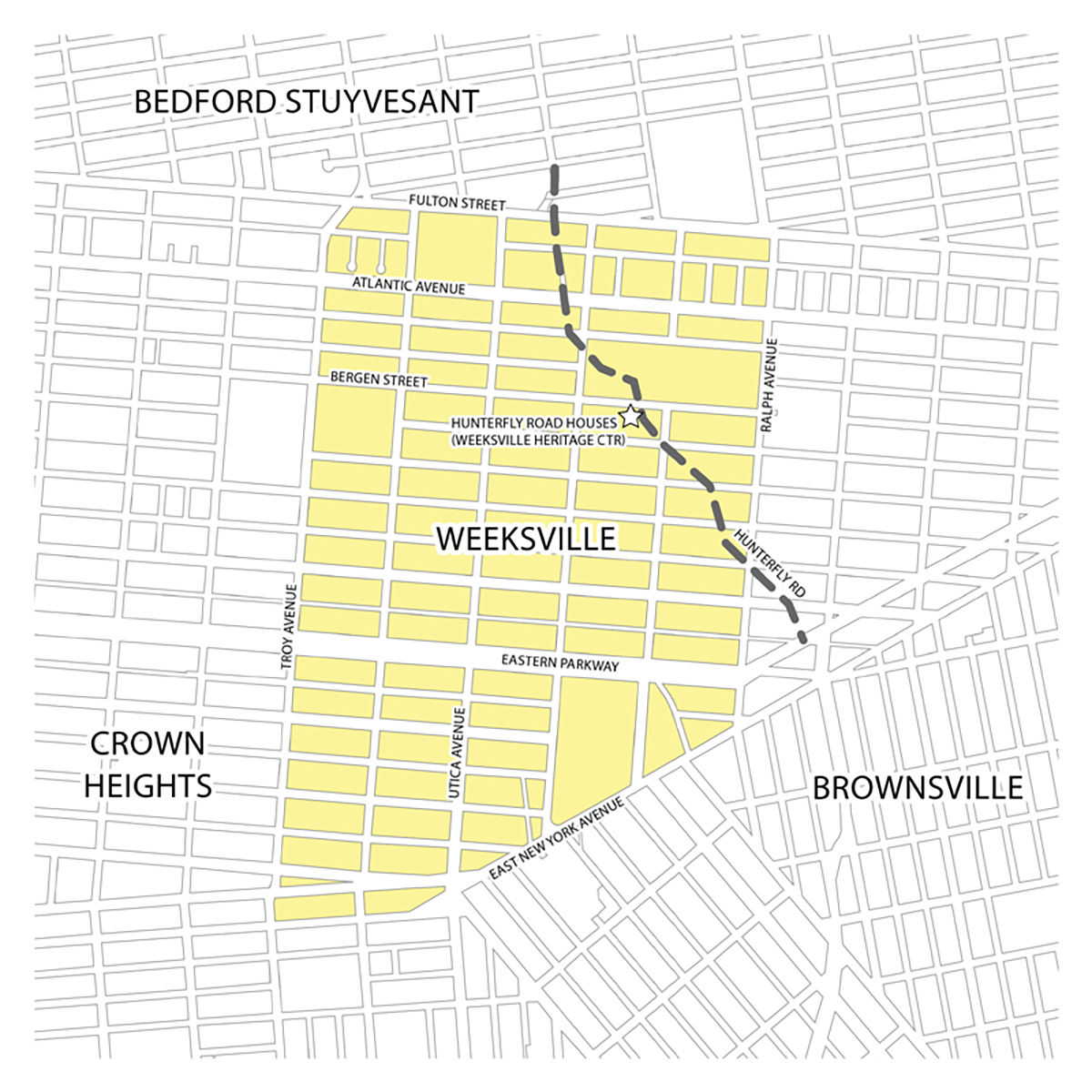
After the rediscovery, an archeological dig was started when Hurley realized that a block of houses bounded by Troy Avenue, Pacific Street, Schenectady Avenue, and Dean Street was about to be cleared to build new city housing under the Model Cities Program. Under the aegis of the Bedford-Stuyvesant Youth in Action anti-poverty program, summer interns of the Neighborhood Youth Corps were employed under what was initially called the Weeksville Project to explore the block as the demolition of the houses occurred.
The archeological site became the location of the present-day Weeksville Gardens Houses belonging to the New York City Housing Authority, and the historic houses and lanes, which had largely been grown over and obscured, were exhumed, restored, and made open and available to the public by The Society for the Preservation of Weeksville and Bedford-Stuyvesant History, founded by Joan Maynard. This organization turned into the Weeksville Heritage Center. Maynard and others led the preservation efforts and the homes were declared individual landmarks on August 18, 1970.
What is Weeksville’s Greenwich Village Connection?
Weeksville was the most prominent free black community in Brooklyn at around the same time that Greenwich Village was home to New York’s largest African-American community. Many prominent residents and leaders moved between the two communities, but one, in particular, stands out.
Henry Highland Garnet was born into slavery on December 13, 1815. In 1824, his family (consisting of 11 members) was given permission to attend a funeral and ended up escaping to Delaware before continuing on to New York City. He attended the African Free School on Mulberry Street and the Phoenix High School of Colored Youth. Garnet began his career as a pastor, leading the congregation of the Liberty Street Presbyterian Church for six years. During this time he published papers that combined religious and abolitionist themes and supported the temperance movement and political antislavery.
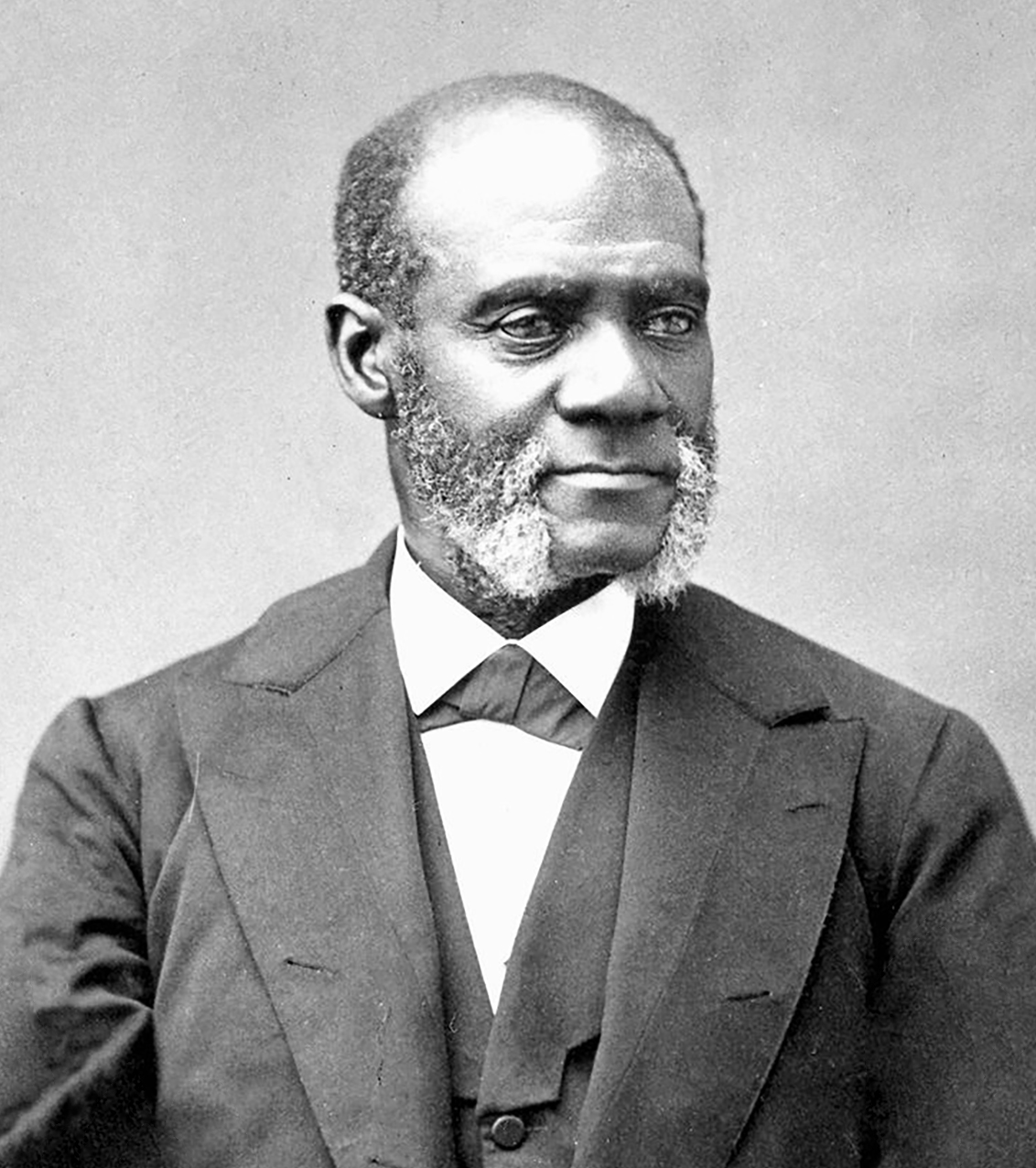
Garnet lived at 185 Bleecker Street, at that time part of the neighborhood of Little Africa. He joined the American Anti-Slavery Society and frequently spoke at abolitionist conferences.
While a strong supporter of Black Nationalism in the United States, Garnet also supported the emigration of black people to Mexico, Liberia, and the West Indies, places where they would have more opportunities. Inspired by the Back to Africa Movement, Weeksville residents were moved by the idea of a free black colony in Liberia. By 1881, Garnet was living in Weeksville when he was appointed U.S. Minister to the black African nation of Liberia, founded by freed U.S. slaves. This allowed him to achieve his dream of living in Liberia. However, he died a mere two months after his arrival there.
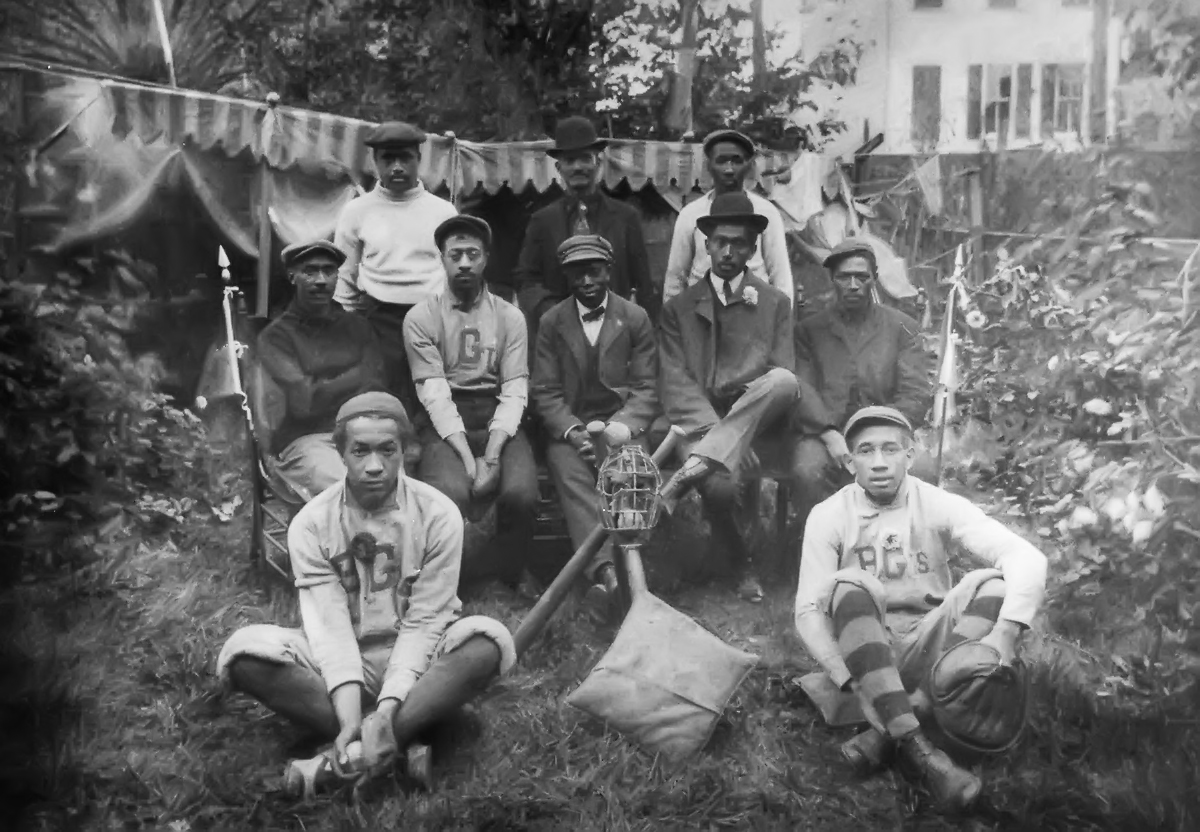
Garnet’s home in the Village has since been demolished and replaced by a new law tenement in the early 20th century. Garnet’s legacy lives on both in the history of the United States and the values of the Village as a strong advocate for his community and for correcting the injustices he experienced and saw around him.
Like Weeksville, nearly all physical vestiges of Greenwich Village’s ‘Little Africa’ community were lost and the memory of it largely forgotten. Village Preservation, among many others, has worked hard to try to call attention to and maintain the memory of the Village’s black community.

